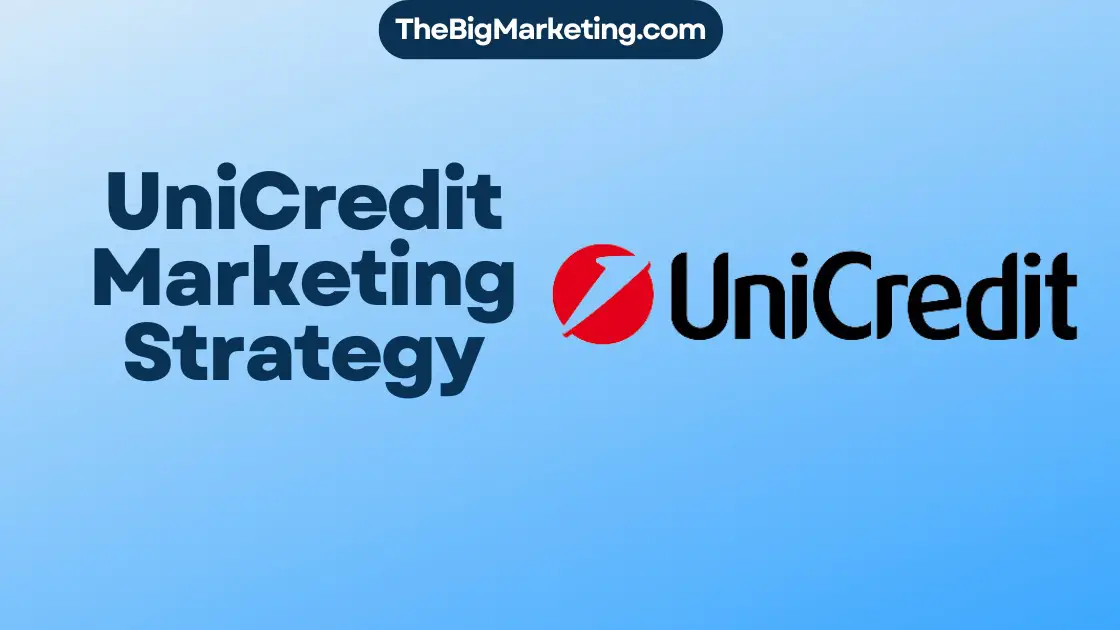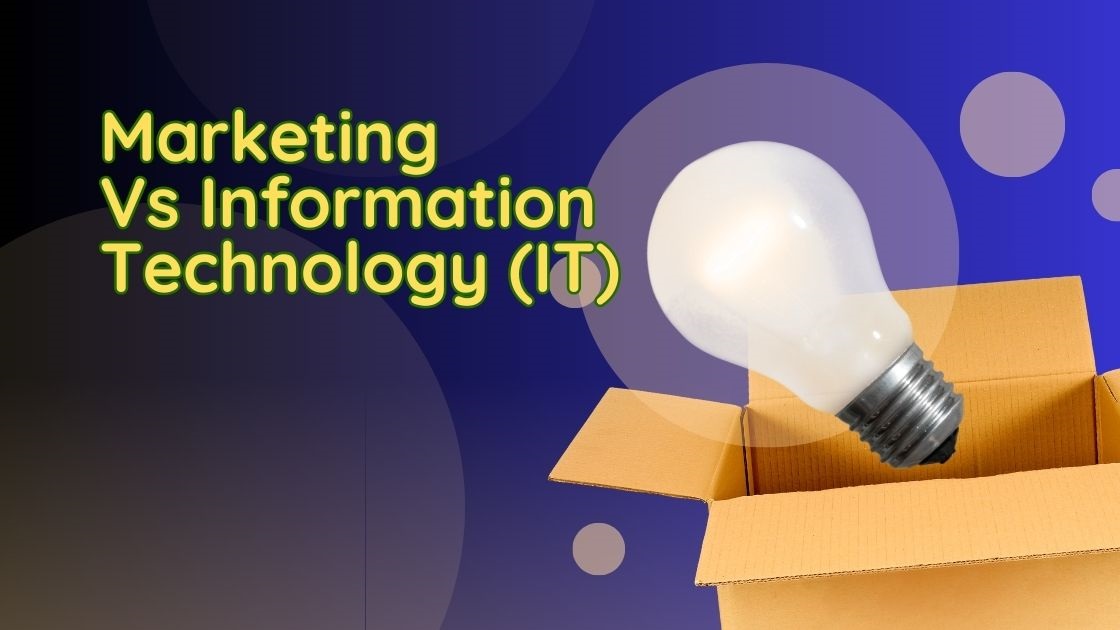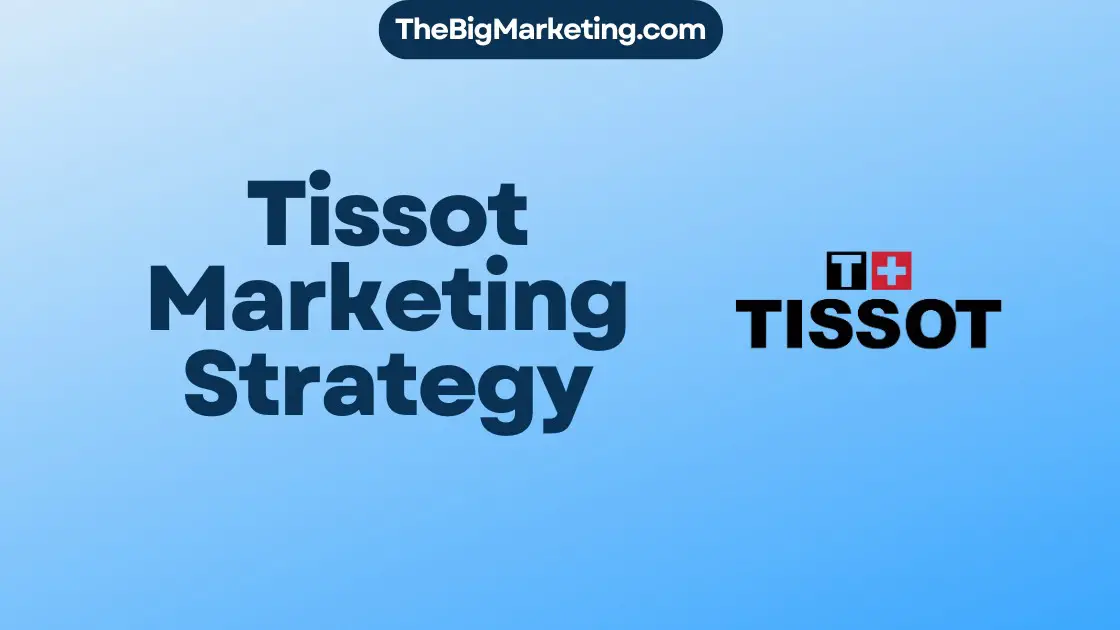Welcome to our comprehensive guide on Call to Action (CTA) marketing strategies and their transformative power in increasing conversions. In this article, we will explore the best practices and techniques to craft compelling CTAs, optimize them for maximum effectiveness, and implement successful CTA strategies in your marketing campaigns for the year 2024.
The world of digital marketing is constantly evolving, and CTAs play a crucial role in driving user behavior and achieving marketing goals. A well-crafted CTA has the potential to captivate your audience, spur action, and ultimately boost conversions. As we delve into the intricacies of CTA marketing strategies, you will gain valuable insights into leveraging the immense potential of CTAs in the ever-changing landscape of digital marketing.
Key Takeaways:
- Understand the impact of CTAs in driving conversions and increasing user engagement.
- Learn effective techniques for crafting compelling CTAs that resonate with your target audience.
- Optimize CTAs for maximum effectiveness based on industry best practices.
- Implement successful CTA strategies to enhance your marketing campaigns.
- Stay informed about the latest trends and advancements in CTA marketing for the year 2024.
The Importance of CTAs in Email Marketing
Email marketing is an essential component of any successful marketing strategy. Whether you’re promoting a product, sharing valuable content, or building customer relationships, emails provide a direct line of communication with your audience. However, without a clear call to action (CTA), your emails may not achieve their desired results.
According to Wordstream, a single CTA button in an email can increase click-through rates (CTR) by 371%. This statistic highlights the significance of CTAs in email marketing and the potential they hold for driving action from recipients.
CTAs serve as the guiding force that directs your subscribers to take the desired action, such as making a purchase, signing up for a newsletter, or downloading a resource. A well-crafted CTA can capture the attention of your audience, spark their interest, and motivate them to engage further with your brand.
In this section, we will delve into the importance of CTAs in email marketing and explore the various ways they can be utilized effectively in your email campaigns. We will discuss different scenarios and provide examples of CTAs for various types of email campaigns, ensuring you have a comprehensive understanding of how CTAs can enhance the performance of your email marketing efforts.
The Role of CTAs in Driving Action
CTAs play a crucial role in driving action from your email recipients. By including clear and compelling CTAs, you can guide your audience towards the desired action and increase the chances of conversion. Whether it’s encouraging them to visit your website, make a purchase, register for an event, or share your content on social media, CTAs serve as a prompt that motivates your subscribers to take the next step.
Without a properly structured CTA, your emails may lose their purpose and fail to generate the desired response. Therefore, it’s essential to strategically place CTAs within your email content, ensuring they are visible, engaging, and aligned with your campaign objectives.
Let’s take a closer look at some key ways CTAs can be utilized effectively within your email campaigns:
- Driving Conversions: CTAs can be used to drive conversions by encouraging recipients to take immediate action. By implementing persuasive and actionable language in your CTAs, you can create a sense of urgency and motivate your audience to make a purchase, sign up for a trial, or engage with your brand in a meaningful way.
- Increasing Click-Through Rates: CTAs can significantly impact your click-through rates, driving traffic to your website or landing pages. By using clear and concise CTAs that indicate the value your recipients will gain by clicking, you can generate higher engagement and increase the likelihood of conversions.
- Segmentation and Personalization: CTAs can be tailored to specific segments of your email list, allowing you to address the unique needs and preferences of different audiences. By personalizing your CTAs based on demographics, purchase history, or browsing behavior, you can make your emails more relevant and compelling to individual recipients.
- Creating Engagement and Building Relationships: CTAs can also be used to encourage engagement and foster relationships with your audience. By inviting recipients to share their thoughts, provide feedback, or participate in surveys and contests, you can create a sense of community and establish meaningful connections with your email subscribers.
By incorporating these strategies and optimizing your CTAs, you can maximize the impact of your email marketing campaigns, achieve higher click-through rates, and ultimately boost conversions.
Next, we will explore different scenarios and provide examples of CTAs for various types of email campaigns, allowing you to gain practical insights into how CTAs can be effectively implemented to achieve your marketing goals.
Different Types of Email CTAs and How to Use Them
When it comes to email marketing, using effective and strategic call-to-action (CTA) buttons is crucial for driving user engagement and achieving your marketing goals. In this section, we will explore different types of email CTAs and provide guidance on how to use them in your campaigns to maximize conversions and click-through rates.
Email CTA Button
The email CTA button is a classic and highly effective way to encourage recipients to take a specific action. Whether it’s directing them to a landing page, encouraging a purchase, or signing up for a webinar, the email CTA button stands out visually and prompts immediate action. To optimize its impact, use contrasting colors, persuasive copy, and ensure it is prominently placed within the email.
Open Invitation CTA
An open invitation CTA is a great way to engage recipients by inviting them to join a webinar, event, or a community. This type of CTA creates a sense of exclusivity and promotes active participation and interaction. Use compelling language and emphasize the value and benefits of attending or joining to generate interest and encourage action.
Authority Gaining Email CTA
An authority gaining email CTA is designed to position your brand or business as an expert or thought leader in your industry. By offering valuable content or expert insights, you can establish credibility and build trust with your audience. This CTA prompts recipients to access exclusive content such as whitepapers, e-books, or case studies, allowing you to showcase your expertise and gain authority.
Committed Action CTA
A committed action CTA aims to prompt recipients to commit to a specific action, such as signing up for a subscription, joining a loyalty program, or becoming a member. By emphasizing the benefits and perks of committing, you can encourage individuals to take that extra step towards building a long-lasting relationship with your brand. Clearly outline the value they will receive and make the process of committing as seamless as possible.
Traffic Generation CTA
A traffic generation CTA focuses on driving traffic to your website, blog, or social media platforms. This type of CTA can be used to promote new content, generate buzz around a product launch, or encourage engagement on social media. Use enticing language and offer a clear incentive to entice recipients to click-through and explore further.
Discount Offer Button CTA
A discount offer button CTA is a powerful way to incentivize recipients to make a purchase or take advantage of a limited-time offer. By highlighting discounts or exclusive promotions, you create a sense of urgency and encourage immediate action. Place the discount offer button strategically within the email and clearly communicate the discount value to entice recipients to make a purchase.
By strategically incorporating these different types of CTAs into your email campaigns, you can capture the attention of your audience, prompt action, and maximize conversions. Experiment with different CTAs, test their effectiveness, and continuously optimize to achieve the best results for your business.
The Power of CTAs in Subject Lines
CTAs can play a significant role in email marketing by boosting open rates. Subject lines with compelling CTAs have the power to capture the reader’s attention and encourage them to open the email. In this section, we will explore the effectiveness of CTAs in subject lines and provide examples of how to utilize them for maximum impact.
Claiming Benefits
One effective way to engage recipients is by highlighting the benefits they can gain from opening the email. Craft subject lines that explicitly state the advantages of clicking through, enticing readers with the value they will receive.
Creating a Sense of FOMO
A sense of urgency can be created by using CTAs that instill fear of missing out (FOMO). Subject lines that convey limited-time offers or exclusive opportunities compel recipients to act quickly for fear of losing out on valuable content or deals.
Discount Focus
A great way to entice recipients to open emails is by focusing on discounts or special promotions. Subject lines that highlight discounts or freebies are more likely to grab attention and lead to higher open rates.
Curiosity-Focused CTAs
Rather than revealing too much information in the subject line, use curiosity-focused CTAs to spark recipients’ interest. Intriguing subject lines can pique curiosity and entice readers to open the email to satisfy their curiosity.
CTAs Within Email Copy
CTAs play a crucial role in guiding recipients towards taking specific actions within an email. In this section, we will explore various scenarios where CTAs can be strategically placed within the body of an email to enhance engagement and drive desired outcomes.
Nurturing Emails CTAs
Nurturing emails are designed to build and strengthen relationships with subscribers. This approach involves using compelling CTAs to encourage recipients to further engage with your brand. These CTAs can prompt them to download a valuable resource, sign up for a webinar, or explore related content. By strategically placing these nurturer CTAs throughout your email copy, you can guide recipients towards deeper interactions and foster brand loyalty.
Prove My Worth Email CTA
Proving the worth of your product or service is crucial in gaining the trust of potential customers. By incorporating a “Prove My Worth” email CTA, you can offer recipients a free trial, a demo, or case studies that showcase the value your solution provides. This CTA should be strategically placed within the email copy, emphasizing the benefits and demonstrating how your offering meets their specific needs.
Helping CTA Before the Final Call to Action
Before presenting recipients with the final call to action (CTA) in your email, it can be helpful to include intermediate CTAs that guide them towards the intended goal. These “helping” CTAs can be placed strategically within the email copy to address any potential concerns or questions and provide additional support or information. By offering value and assistance along the journey, you increase the likelihood of recipients taking the final desired action.
Non-Promotional Invitation
Non-promotional invitations are a valuable way to engage recipients without directly selling a product or service. These invitations can be in the form of event invitations, webinars, or surveys. By including non-promotional CTAs within your email copy, you can offer recipients an opportunity to participate in an event or provide feedback, creating a sense of exclusivity and fostering a deeper connection with your brand.
Appointment Booking CTA
If your business relies on scheduling appointments or consultations, incorporating an appointment booking CTA in your email copy can streamline the process and encourage recipients to take action. By providing a convenient and easy-to-use booking system within the email, recipients can quickly schedule a meeting or call, significantly increasing the chances of converting leads into customers.
By strategically incorporating these various types of CTAs within your email copy, you can optimize engagement, nurture relationships, and drive desired actions from your recipients.
Maximizing Impact with Image CTAs
Images have proven to be highly effective in capturing audience attention and driving engagement. When integrated with call-to-action (CTA) elements, images can further enhance the impact of your email marketing campaigns. In this section, we will explore how image CTAs can be utilized to their full potential, particularly in e-commerce promotion emails and product showcase CTAs.
Image CTAs in E-commerce Promotion Emails
In the world of e-commerce, showcasing products and enticing customers to make a purchase is crucial. By incorporating image CTAs in your promotional emails, you can create visually appealing and compelling messages that motivate recipients to take action.
For example, imagine you’re promoting a summer clothing sale. Instead of relying solely on text-based CTAs, you can include high-quality images of the discounted items, styled on models or displayed in an attractive setting. By making the products visually appealing, you can pique the interest of your audience and entice them to click through to your website or online store.
Furthermore, consider incorporating image carousels or galleries within your email to showcase multiple products or offer exclusive previews. By providing a visually enticing experience, you can create a sense of urgency and encourage recipients to explore your offerings.
Product Showcase CTAs
Product showcase CTAs go beyond traditional text-based descriptions of your offerings. By using captivating images, you can present your products in an engaging and impactful manner, making it easier for customers to visualize themselves using or owning the item.
For instance, if you’re promoting a new line of smartphones, including high-resolution images highlighting the product’s sleek design, cutting-edge features, and vibrant display can significantly enhance customer interest. By strategically placing a CTA button or link within the image, you can guide customers to take the desired action, such as exploring further details, making a purchase, or signing up for updates.
Remember, when incorporating image CTAs, it’s crucial to ensure that the images are optimized for different email clients and devices. Make sure they are mobile-friendly and load quickly to maximize the impact of your CTAs across various platforms.
- Create visually appealing and compelling messages with image CTAs in e-commerce promotion emails.
- Include high-quality images of discounted items to attract and engage recipients.
- Utilize image carousels or galleries to showcase multiple products and create a sense of urgency.
- Enhance product descriptions with captivating images to help customers visualize the item.
- Strategically place CTA buttons or links within the product images to guide customers towards the desired action.
- Optimize images for different email clients and devices to ensure a seamless user experience.
By leveraging the power of image CTAs in your email marketing, you can captivate your audience, increase engagement, and drive conversions. The strategic use of images in e-commerce promotion emails and product showcase CTAs can have a profound impact on the success of your email marketing campaigns.
The Rise of the Metaverse and Its Impact on CTAs
In the ever-expanding digital landscape, the metaverse emerges as a rapidly growing realm, opening up new and exciting possibilities for marketers. This immersive virtual world offers unique opportunities to engage with audiences like never before. As we delve into the concept of the metaverse and its potential impact on call to action (CTA) strategies, we uncover a whole new dimension of marketing in the metaverse.
The metaverse allows brands to create immersive brand environments where users can interact and engage with their products and services. This powerful tool enables marketers to transcend traditional marketing boundaries and transport customers into fully immersive brand experiences. By capitalizing on the metaverse’s vast potential, brands can foster a deeper connection and capture the attention of their target audience.
Major brands like Nike and H&M have already recognized the metaverse’s power and incorporated it into their marketing campaigns. For instance, Nike has partnered with popular metaverse platforms to offer virtual sneaker shopping experiences, creating a sense of exclusivity and excitement. H&M has also ventured into the metaverse, hosting virtual fashion shows that allow users to experience the brand in a unique way.
Immersive brand environments in the metaverse bring products and services to life, providing customers with a hands-on experience that goes beyond traditional marketing methods. This virtual realm offers endless possibilities for creativity and innovation, enhancing brand visibility and driving customer engagement.
Furthermore, the metaverse provides an ideal platform for community-building. Brands can foster communities within the metaverse, allowing users to come together, share experiences, and connect on a deeper level. This sense of belonging encourages brand loyalty and advocacy, nurturing long-term customer relationships.
Incorporating CTAs within the metaverse becomes instrumental in guiding users towards specific actions and driving conversions. Whether it’s prompting users to explore a virtual store, participate in a virtual event, or make a purchase, CTAs play a pivotal role in engaging users and encouraging them to take the desired action.
The metaverse opens up a universe of possibilities for marketers, revolutionizing the way they approach CTAs and immersive brand experiences. By harnessing the metaverse’s power, brands can create unforgettable interactions, build thriving communities, and optimize their CTAs for maximum impact.
Brands Harnessing the Metaverse for Marketing
Inspired by the metaverse’s potential, several forward-thinking brands have already embarked on innovative marketing campaigns within this digital realm. Let’s explore how Nike and H&M have utilized the metaverse to enhance their marketing efforts:
| Brand | Marketing Campaign |
|---|---|
| Nike | Nike partnered with popular metaverse platforms to create virtual sneaker shopping experiences. Users can explore virtual stores, try on virtual sneakers, and make purchases within the metaverse. |
| H&M | H&M organized virtual fashion shows in the metaverse, showcasing their latest collections in a unique and immersive way. Users can attend the shows, interact with virtual avatars, and even purchase featured items. |
These examples demonstrate how brand experiences in the metaverse can captivate audiences and blur the lines between the physical and digital worlds. By embracing this new frontier, brands can truly leverage the power of the metaverse to create unforgettable marketing experiences and drive measurable results.
The Surge of Programmatic Advertising and Its Role in CTAs
Programmatic advertising has revolutionized the way ads are bought and placed in the digital advertising landscape. With its efficient and precise targeting capabilities, programmatic advertising offers a powerful tool for enhancing the effectiveness of Call to Action (CTA) strategies.
One notable example of a brand leveraging programmatic advertising to optimize CTAs is Spotify. The popular music streaming platform utilizes programmatic technology to deliver personalized ads to its users. By analyzing user behavior and preferences, Spotify is able to serve targeted ads that resonate with their audience, driving higher engagement and conversion rates.
The efficiency of programmatic advertising lies in its ability to automate ad buying and placement in real-time. This automated process ensures that ads reach the right audience at the right time, maximizing the likelihood of a desired action. Through advanced algorithms and machine learning, programmatic advertising optimizes CTAs by delivering personalized messages that speak directly to the needs and interests of individuals.
Precision targeting is another key feature of programmatic advertising that enhances the effectiveness of CTAs. By leveraging data from various sources, such as browsing behavior, demographics, and interests, programmatic advertising enables advertisers to target specific audiences with laser-like precision. This level of targeting ensures that CTAs are delivered to the most relevant audience segments, resulting in higher response rates and improved campaign performance.
To illustrate the impact of programmatic advertising and personalized ads on CTAs, consider the following scenario:
Case Study: Spotify’s Personalized Ads
Spotify, with its vast user base and extensive music library, leverages programmatic advertising to deliver personalized ads to its users. Using data on listening preferences, location, and demographics, Spotify’s algorithm serves tailor-made ads that align with the individual’s interests and preferences.
For example, a user who frequently listens to hip-hop and follows various indie music playlists may receive an ad promoting a new hip-hop album by an up-and-coming indie artist. This personalized approach creates a sense of relevance and resonance, increasing the likelihood of the user interacting with the CTA and taking the desired action, such as streaming the album or exploring the artist’s profile.
Through programmatic advertising, Spotify is able to deliver highly targeted CTAs to its users, ensuring that the messages they receive are specific, compelling, and tailored to their unique preferences. This level of personalization fosters a deeper connection with the brand and significantly enhances the effectiveness of CTAs in driving user engagement and conversions.
Programmatic advertising’s efficiency and precision targeting capabilities play a crucial role in enhancing the effectiveness of CTAs. By leveraging advanced algorithms and personalized ad delivery, brands can optimize their CTAs, reaching the right audience with the right message at the right time. As programmatic advertising continues to evolve, it opens up new possibilities for marketers to create more impactful and engaging CTAs that drive higher conversion rates.
Data-Driven Marketing and Its Influence on CTAs
Data-driven marketing plays a pivotal role in developing effective CTAs that drive user behavior and achieve marketing goals. By harnessing the power of data analysis, businesses gain valuable customer insights and refine their content marketing strategies to optimize CTAs and boost conversions.
Customer insights obtained through data analysis enable marketers to segment their audience and tailor CTAs based on their specific preferences, needs, and pain points. Understanding customer behavior allows for personalized and targeted CTAs that resonate with individuals on a deeper level, increasing the chances of conversion.
Content marketing is another area where data-driven strategies can significantly influence CTAs. By analyzing data on user engagement, marketers can identify the types of content that perform best and align CTAs accordingly. For example, if a particular blog post or video receives high traffic and engagement, incorporating a CTA within the content that encourages further exploration or provides additional resources can lead to enhanced conversions.
Data-driven marketing also enables marketers to measure the impact of their CTAs and make data-backed optimizations. A/B testing different CTAs allows for iterative improvements and fine-tuning based on real-time data. Through data analysis, marketers can identify the highest performing CTAs, understand which elements contribute to their success, and optimize underperforming CTAs to achieve better results.
Best Practices for Incorporating Data into CTAs
- Utilize marketing automation platforms that offer robust data analytics capabilities to gather and analyze relevant customer data.
- Implement tracking mechanisms, such as UTM parameters, to monitor CTA performance across different channels and campaigns.
- Regularly monitor key performance indicators (KPIs) related to CTAs, such as click-through rates, conversion rates, and engagement metrics.
- Leverage audience segmentation and personalization techniques to deliver targeted CTAs that align with specific customer preferences.
- Continuously test and optimize CTAs based on data insights to improve their effectiveness and drive higher conversion rates.
By embracing data-driven marketing and integrating customer insights into their CTAs, marketers can create more compelling and impactful calls to action that resonate with their target audience, resulting in increased conversions and business success.
The Future of Content Marketing Strategies and CTAs
As we move into 2024, content marketing strategies continue to evolve, presenting new opportunities for businesses to engage with their target audience. In this section, we will explore the projected changes in content marketing strategies and their impact on Call to Action (CTA) implementation. By staying ahead of the curve and adapting to these changes, businesses can maximize the effectiveness of their CTAs and drive higher conversions.
Social Storytelling: Harnessing the Power of Narrative
Social storytelling has emerged as a powerful tool for brands to connect with their audience on a deeper level. By crafting compelling narratives that resonate with their target market, businesses can create meaningful experiences that inspire action. Incorporating storytelling elements into content marketing strategies can enhance the effectiveness of CTAs, as they become part of a larger narrative arc.
Optimizing Facebook Presence: Reaching a Wider Audience
Facebook remains a dominant force in the social media landscape, providing businesses with extensive reach and targeting options. To leverage the full potential of Facebook, brands must optimize their presence on the platform. By creating engaging content, leveraging Facebook’s advertising options, and utilizing CTAs strategically, businesses can maximize their visibility and drive conversions.
Adapting to Changes in Search Engine Optimization (SEO)
The field of SEO is constantly evolving, and content marketers must stay updated on the latest trends and strategies. As search engines refine their algorithms, businesses need to adapt their content marketing strategies to ensure visibility and organic traffic. Optimizing content for relevant keywords, creating high-quality backlinks, and integrating CTAs seamlessly into the content can enhance the overall SEO performance.
Rethinking Link Usage: Enhancing User Experience
Link usage has a significant impact on user experience and can influence the effectiveness of CTAs. In 2024, businesses should focus on providing a seamless and intuitive browsing experience for their audience. This includes using clear and descriptive anchor text for hyperlinks, utilizing appropriate hover effects, and reducing broken or irrelevant links that may distract or confuse users.
Exploring Advertising Options: Beyond Traditional Approaches
Traditional advertising methods are becoming less effective as consumers become increasingly ad-savvy. To capture the attention of their target audience, businesses should explore alternative advertising options. This may include influencer marketing, native advertising, or creative collaborations with complementary brands. By incorporating CTAs into these innovative advertising strategies, businesses can generate better engagement and drive conversions.
In conclusion, content marketing strategies continue to evolve, necessitating a proactive approach to stay ahead of the competition. By embracing social storytelling, optimizing Facebook presence, adapting to changes in SEO, rethinking link usage, and exploring unconventional advertising options, businesses can enhance the effectiveness of their CTAs and achieve higher conversion rates.
The Role of AI in Marketing and CTAs
AI (Artificial Intelligence) is revolutionizing the marketing landscape, providing marketers with new tools and strategies to enhance their campaigns. In this section, we will explore the various applications of AI in marketing and its role in enhancing call-to-action (CTA) effectiveness.
Data Insights
One of the key advantages of AI in marketing is its ability to analyze vast amounts of data and extract valuable insights. By leveraging AI-powered analytics tools, marketers can gain valuable data-driven insights into consumer behavior, preferences, and trends. These insights can then be utilized to create more targeted and personalized CTAs, improving the overall effectiveness of marketing campaigns.
Personalization
Personalization is a crucial aspect of effective marketing, and AI plays a significant role in achieving personalized experiences for consumers. By leveraging AI algorithms, marketers can create highly tailored CTAs that resonate with individual customers. From personalized email CTAs to dynamic website CTAs, AI enables marketers to deliver personalized messages and offers to each customer, increasing the chances of conversion.
AI in Content Creation
Content creation is a time-consuming process, but AI can help streamline and optimize this aspect of marketing. AI-powered content creation tools can generate high-quality and engaging content, ranging from blog articles to social media posts. By utilizing AI in content creation, marketers can produce a larger volume of content that aligns with their target audience’s preferences and interests, leading to more effective CTAs.
AI in Customer Segmentation
Effective customer segmentation is essential for targeted marketing efforts. AI can play a crucial role in automating and improving the accuracy of customer segmentation. By analyzing data and using AI algorithms, marketers can segment their customer base more effectively, allowing for the creation of highly targeted CTAs. This ensures that each customer receives a CTA that is relevant to their specific needs and interests, increasing the likelihood of conversion.
Incorporating AI into marketing strategies empowers marketers to leverage data insights, personalize their communications, optimize content creation, and improve customer segmentation. By harnessing the power of AI, marketers can enhance the effectiveness of their CTAs and drive higher levels of engagement and conversions.
| AI Applications in Marketing | Benefits |
|---|---|
| Data Insights | – Provides valuable consumer behavior insights – Allows for more targeted CTAs |
| Personalization | – Delivers customized CTAs – Increases conversion rates |
| AI in Content Creation | – Streamlines content creation process – Enhances content quality |
| AI in Customer Segmentation | – Improves accuracy of customer segmentation – Enables targeted CTAs |
Conclusion
Effective CTAs are a crucial component of any successful marketing strategy. Throughout this guide, we have explored the best practices and techniques for crafting compelling CTAs, optimizing them for maximum effectiveness, and implementing successful CTA strategies.
By following these tips and incorporating them into your marketing campaigns, you can boost conversions and drive user behavior in 2024. Remember to create clear and action-oriented CTAs that grab the attention of your audience and provide them with a compelling reason to take action.
Optimizing your CTAs involves understanding your target audience, testing different approaches, and continuously analyzing the results to refine your strategy. Crafting compelling CTAs requires creativity, a deep understanding of your brand, and a focus on delivering value to your audience.
As you move forward with your Call to Action Marketing Strategy, keep experimenting, iterating, and adapting to stay ahead of the curve. By mastering the art of CTAs, you can fuel the success of your marketing efforts and achieve your business goals.







